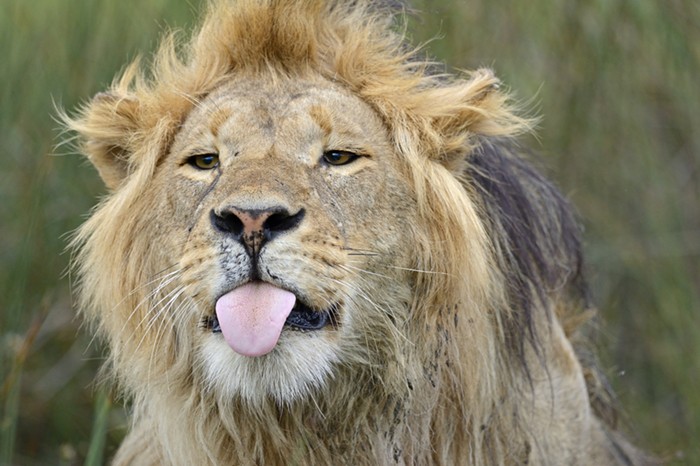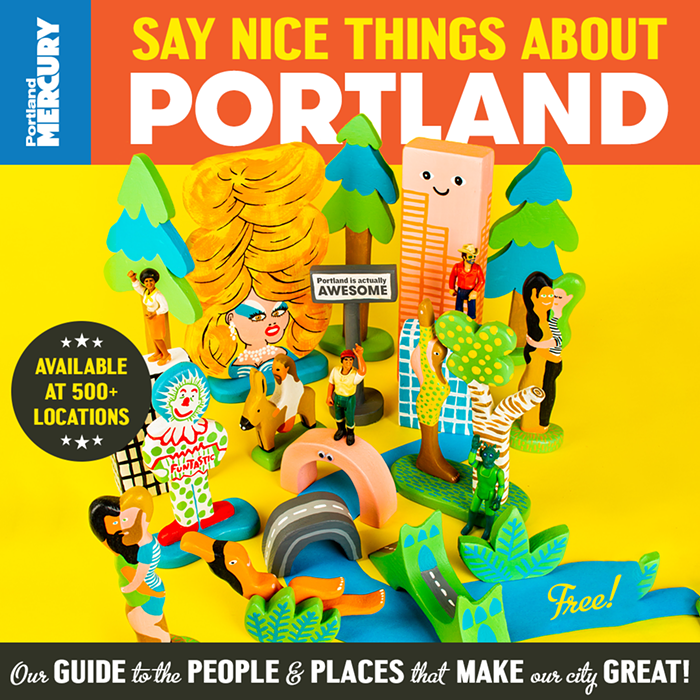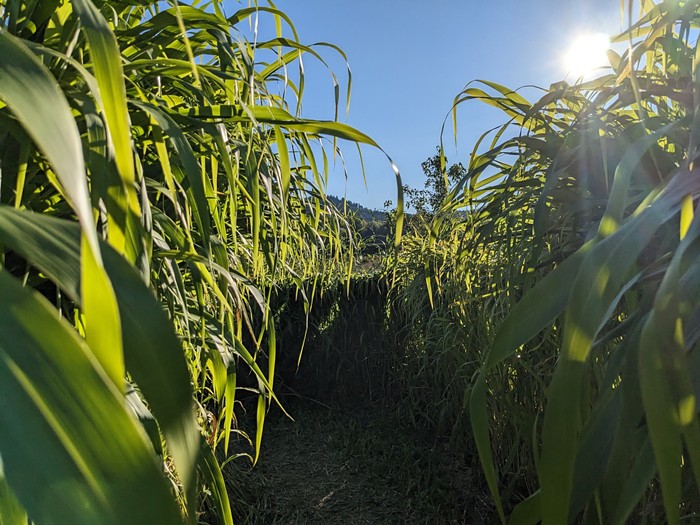OREGONIANS will take any opportunity to have a beer festival. The death of George Jones recently inspired a tribute party at Old Town Brewing, coaxing local brewers to brew in memory of the country legend. Rogue puts on a dog-friendly festival in Newport to celebrate Rogue's "founding dog," Brewer.
But it's the Oregon Brewers Festival (OBF) that stands out. In its 26th year and going down at Waterfront Park this weekend, the fest has earned a national reputation as one of the best, longest, loudest, happiest craft-beer festivals in the country. The far-reaching draw of OBF is one example of the Oregon craft-beer scene's nationwide reputation. OBF also showcases the diversity of our craft beer. For instance, Hopworks Urban Brewery is bringing a pear Belgian ale. Widmer brewed up a "Thai lager" with lime leaf, lemongrass, and ginger. And of course, there's a ton of IPA. In this town, there is always a ton of IPA.
That's changing, however—and changing somewhat dramatically—at least in the beer-nerd world. The Oregon craft-beer market is one of the most mature in the country. With some of our older breweries in their mid- to late-twenties, a lot of the actual brewers behind that history are now branching out into their own establishments.
Josh Pfriem of pFriem Family Brewers calls this "The Wave of the Brewers." He says, "These guys, Ben Edmunds at Breakside, Van Havig and Ben Love at Gigantic, Larry Sidor at Crux, David Logsdon at Logsdon Farmhouse Ales, a lot of others—these are all smart brewers, and a lot of them have been around a long time. They're doing what they want to do now."
Pfriem spent time brewing at Full Sail in Hood River, as well as elsewhere in the country. He has enough experience to believe that his goals—which are lofty—are achievable. As he shows me around his currently expanding brewery, he's clear-eyed and serious, but excited. "This will be where the lab goes." He's seeing a thriving brewery, but pointing to torn-up foundation and dust.
Ambition levels are high in the Wave of the Brewers. But there's a lot of experience, too. Pfriem's roadmap is realistic; he knows what he wants, but he's not rushing into anything. He knows his reputation is important enough that he'd better live up to it. "That's why I put the family name on it. It's a guarantee."
The days of the hop are not over in Oregon, and never will be. Hops are vital to our beer, and justifiably so—they're delicious and they define our region. Van Havig of Gigantic Brewing compares the US and Europe: "It's good for us, as a craft-beer region, to have that identity. It's like in Germany, you can say this area brews Kölsch, this area brews hefeweizen. It gives our region a style."
But now, a few years after the IPA, IIPA, IIIPA wars, you don't have to brew IPA in this state to be a viable brewery. Nobody's not brewing hoppy beers, of course, and Gigantic is probably brewing more IPA than everything else they brew combined, and they like it that way. As Havig puts it, "You look at our sales numbers in the pub, you're talking 50 percent IPA. Every day."
Yet, even with that hoppy foundation, Havig and partner Ben Love (once of Hopworks) have become known in this city for their line of one-offs, from collaborations with well-loved, faraway breweries like Three Floyds in Indiana to a revolving door of Belgian-style ales. They worked with Breakside to brew the official beer of the 2013 PDX Beer Week, an "India Wild Ale," a hopped-up, wild-fermented brew that was slightly tart, more than fairly bitter, and pretty damn unique.
Gigantic and Breakside can get away with brewing an IWA mostly because they've proven themselves to the Oregon craft scene. Ben Edmunds is a Siebel Institute-trained brewer who has led the brewing at the rapidly expanding Breakside through the pub phase into their new production brewery in Milwaukie. Through their growth, Edmunds has remained steadfastly experimental: On the menu during my last visit was a beer called Duck Duck Drunk, a porter brewed with 100 roasted ducks.
Havig says, "My dad didn't teach me much. But one thing he did teach me was this: He said, 'Van, the only thing you have in life—the only thing—is your reputation.' And he was right. It's all you have. And you've got to make it."
What's wonderful about Oregon is that the brewers have learned the scene can handle whatever they throw at it. The beer-drinking public and the beer-nerd public are not, of course, the same thing. But if you want to brew old-world Belgian-inspired beer almost exclusively, you can.
When Mike Wright started the Commons Brewery in 2010, he "made a deliberate decision not to take on the 47 or 48 other guys in town making pale ales and IPAs." His Flemish Kiss, a pale ale with Brettanomyces (an old-world wild yeast strain known for drying out and souring beer) is an award-winning, nationally known beer.
The traditions Wright is utilizing in his "urban farmhouse" brewery are old-world customs. They're Belgian traditions, the kind that grew out of farming practices. "These are styles that were brewed partly because you needed something to drink when there wasn't a lot of potable water," he says. "But now they're a style in their own right." He's referring to saison, a light, dry Belgian beer originally imbibed by farmhands on the farm.
Oregon brewers, in the last few years, have been more outwardly interested in these rustic, rural styles of beer. These are yeast-driven beers, and as Havig puts it, "Hops are great. I love hops. But for brewers, yeast is what's interesting."
For craft beer in Oregon, yeast has been a key component from the beginning. David Logsdon, owner of Logsdon Organic Farmhouse Ales, founded Wyeast Laboratories in 1986, and provided much of the yeast that fermented the first wave of craft brews in Oregon.
Logsdon and his head brewer, Charles Porter, brew their beer in a farmhouse south of Hood River. Mt. Hood towers in the near distance and highland cattle laze in the shade. Logsdon's pedigree lets him get away with saying things like, "Farmhouse isn't a style. It's only farmhouse beer if it's made in a farmhouse."
That pedigree also allows him to brew farmhouse ales like his famous Seizoen Bretta (a Brettanomyces-fermented saison that won gold at the Great American Beer Festival). His focus on old Belgian styles even has him investing in wild fermentation systems, experimenting with cider, and importing traditional Belgian cherries and grafting them to trees on the farm.
That Logsdon can pick the ingredients for his beer from his own and adjacent properties is indicative of the Oregon brewing environment. Ask Alex Ganum of Upright Brewing, who stares longingly at his own beer that sits in his Portland brewery, aging in local wine barrels with Oregon muscat grapes, as he laments that he missed out on a particularly amazing crop of nectarines this year.
The local food scene inspires brewers like Ganum and Breakside's Edmunds. Ganum says, "The food here is just so flavorful and aromatic. It makes the beer that way, too." Edmunds sees a comfortable place for exploration in the food scene: "Even if the market doesn't allow for these foodie beers or culinary beers, the restaurant scene supports these things. You can get buzz or acclaim or goodwill without market viability because Portland's so adventurous."
The diversity of Oregon beer culture, however, means that people won't always be pleased by its behaviors. Gigantic's Havig, for instance, is unsatisfied with the way Portland chefs treat beer. "These chefs love Ben [Edmunds] and Alex [Ganum] because they're foodies. They eat this amazing food and they get inspired to brew these great culinary beers." In a particularly animated moment, Havig leaps from foot to foot in the middle of his production floor, waving his hands and using a shocking falsetto to impersonate Portland chefs: "Oh! Oh! I wanted a Caprese salad beer, so I made Caprese salad and they made it a beer!" Havig's philosophy? "I get inspired by drinking beer... and then I make fucking beer."
Then there are the outliers: the recent breweries that seem to embrace old-world, niche beer styles out of inevitability rather than taste. Agrarian Ales, for instance, is possibly the most authentic "farmhouse-style brewery" in the state. Located on the farm where owner Ben Tilley and his brother (and brewer) Nathan grew up, the brewery is a component of something larger. Tilley's parents farm peppers, potatoes, berries, and other crops. Tilley grows hops and sources his ingredients very locally. "Just about everything comes from across the river, where the soil from the confluence of the Willamette and the McKenzie is just awesome." To Tilley, getting deeper into the land underneath his farm is more important to his beer than expanding distribution.
Agrarian's Tobias Schock is the dirtiest brewer I have ever met. He's covered in dirt and mud when I meet him. "Tobias has been weeding in the hop fields," Tilley explains. Before that he was tending peppers, and before that he was checking pressure levels in the brewery. He's proud of the dirt on him, and every day he works hard to earn his end-of-day "Field Bier," Agrarian's light, dry work beer.
Another of these anomalous brewers, and one who has more interest in the market outside a stone's throw from his brewery, is Trevor Rogers of de Garde Brewing. The de Garde brewery is outside Tillamook, specifically because "that's where the microflora was." The specific yeast and bacteria that fermented and flavored the beer there motivated Rogers and partner Linsey Hamacher to drop everything and move there. They followed the yeast and built a brewery.
The question is, how viable will that be? Are these niche brewers shooting themselves in the foot? Rogers says, "[Wild-fermented beer] is not a great way for a business to make money, necessarily. It takes so much longer to make, tying up space and needed capital, and with growing competition in the market, the generally high pricing will be difficult to sustain."
But Rogers is confident that the conditions are right. "I think you have to be doing it because you love it." He also points to the Oregon wine scene, and how unexpected that was in the beginning. But when I ask Rogers why Oregon is a place where one can open an all-wild brewery at all—he thinks, smiles, and says, "Oregon's wild. It's wild, man. Look around us." We're at Bailey's Taproom and it's full of bearded men and beaded dreads, suits and rags and black dresses and jeans and hats indoors. "Of course it would happen here."
The fact is there are a lot of business models in this market. Upright is on track to brew 1,300 barrels this year, and Ganum is satisfied with those numbers. "I think we like it this way, you know? We're taking most weekends off. I feel like I can pay the guys who work for me a fair wage, pay them what they're worth. Honestly, I wasn't able to do that at first."
Josh Pfriem says pFriem Family Brewers, at its current location, would top out at 8,000-9,000 barrels a year. "Would I want to go past that? Probably not." Of Gigantic's brewery, Havig says, "If we really humped it, we could probably do 4,500, maybe 5,000 barrels. We don't want to do that, though. We're going to make 4,000 barrels a year, period."
Logsdon Organic Farmhouse Ales is licensed to make 3,000 barrels a year. "Do we want to push that to 5,000? We'll see." Expansion is in the minds of some of these younger Oregon breweries. Edmunds, talking over the bubbling IPA in one of the tanks at Breakside's Milwaukie production facility, says, "Scott [Lawrence, an owner of Breakside] said he wanted his friends on the East Coast drinking Breakside beer in eight years. We went from there." Of the breweries content to hover around 1,000 to 3,000 barrels, Edmunds says, "The great thing about this market is that there are lots of business models. But IPA is still your ticket to ride if you want to grow."
What all of these brewers agree on is the purpose of beer. Never has there been a brewer, a real brewer who brewed beer for the love of it, who did not swear by some version of "Beer is about people." No matter what, these brewers are happy if their beer is bringing people together and encouraging conversation and community.
What's unique about Oregon—and Portland, specifically—is that, as Edmunds puts it, "The same amazing craft beer is available at a James Beard Award-winning chef's restaurant, the dirtiest strip club in the city, and the local market." And with no shortage of pubs, tap houses, and nebulously justified beer festivals, one can always find a group, even a mob of thousands, to put back a few pints with.
You got a day when the sun comes up and everyone's alive and thirsty? Hell, let's have a beer fest.














